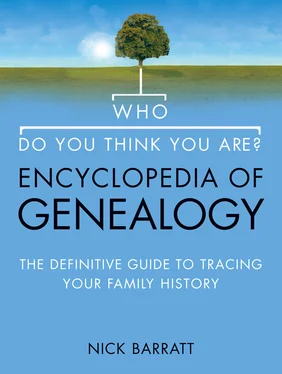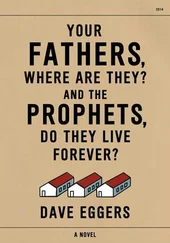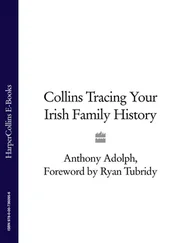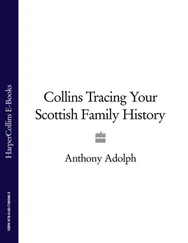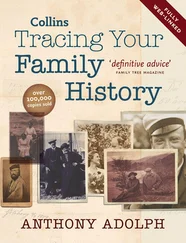The information on the census was organized by distinct registration districts for England, Wales and Scotland. These were initially identical to the registration districts created in 1837 for civil registration purposes, based on existing Poor Law Unions that had been set up in 1834. Each registration district was a subdivision of a county and its size was dependent on population. These registration districts would be divided into smaller sub-districts and the sub-districts would be further divided into individual enumeration districts. The size of the enumeration district was an estimate of how many houses the enumerator could visit in one day. Inevitably, enumeration districts would be geographically larger in rural areas where the population was less dense. Additionally, each enumeration district book would have a cover page giving in detail the area and exact roads included in the district, along with parish, hamlet, village, town or county details.
These enumeration districts were roughly the same for the years 1841 to 1891 in order to make valid comparisons of data collected on specific censuses. However, the large increase in population and the industrialization of urban areas meant it was not always possible to adhere to this. Any such alteration would be recorded in the summaries of the returns, so it is worth looking at these cover pages if you want to find out more about the area in which your family lived – an important part of your work, if you remember the advice about historical context from Section One!
‘Census returns add real colour, as they provide additional information besides biographical data which allows you to investigate the social history surrounding your ancestors’ lives.’
England and Wales: Census Returns 1841–1901
Information Contained on the 1841 Census
The first detailed census was taken on Sunday, 6 June 1841, and recorded every individual that spent the night in a property; therefore family visitors and boarders would be recorded as living in that property, and not at their permanent place of residence. The format of the form was a two-sided columned page, with information running across the top of the page that stated the hamlet, village or borough plus parish details on the right-hand side. Both pages would have the following columns recording information about:
• Place: This would usually be the street, with occasionally the house name or number. However, house numbers were rarely recorded.
• Houses: Uninhabited or building / inhabited: The enumerator would mark each new house on the street. He was also expected to indicate where a house was uninhabited.
• Names of each person who abode there the preceding night: It was common for middle names to be unrecorded. As stated above, each person who had slept in the property on that night had to be accounted for. No relationship to the head of the household was given and it is not always possible to work out family relationships.
• Age and sex: Ages of children up to the age of 15 years were recorded accurately. However, adults’ ages above 15 were usually rounded down to the nearest five years. Hence, an individual whose given age appears as 40 could, in fact, be aged anything from 40 to 44 years old.
• Profession, trade, employment or of independent means: This could be misleading as in the nineteenth century people would often have more than one occupation and not every job was noted. The abbreviation ‘M.S.’ or ‘F. S.’ was for male or female servants.
• Born: whether born in the same county? Whether born in Scotland, Ireland or Foreign Parts: This is the closest information relating to place of birth provided. It would simply state whether an individual was born in the same county as the one they lived in, or in Scotland, Ireland or ‘foreign parts’. These would be abbreviated as ‘S.’, ‘I.’ or ‘F.’ accordingly. The abbreviation ‘NK’ may also be used for ‘not known’. Although in rural areas people tended to be living in the parish of birth, this would by no means be universal (especially in urban areas), and hence finding a birth or baptism record would be difficult from the information provided here.
Two other problems are worth bearing in mind when searching this census. First, unlike later censuses, the original enumerator books were filled in using pencil not pen. Thus many pages have now become faded and can be difficult to read (especially the microfilm copies that are often held in county record offices). Secondly, there are some counties where the returns do not survive in their entirety. A complete list of missing and incomplete returns can be found online at www.ancestry.co.uk (see below).
Archive References for the 1841 Census
Every census return now has a modern archive reference, based on the government department that had responsibility for organizing the census at the time it was carried out. The original returns are now held at The National Archives at Kew, and no matter where you are viewing the returns – at TNA, a county archive or online – the archive references form an important part of either finding the correct return or creating your own referencing system when you download information from the Internet into your own files. Wherever archive references appear in this book, they will be accompanied by an explanation of what they mean, and how you should use them in your notes or files. Further information about locating census returns follows shortly.
The 1841 census had a different form of organization and referencing than later censuses and was not based simply on registration districts. It was administered by the Home Office, and has been given TNA series classification HO 107. Individual parishes in each county were grouped together into hundreds, and the census returns were subsequently sorted by county on an alphabetical basis, then by hundred, and lastly by parish. These hundreds were given unique piece numbers, which you can see on the scanned reference slip that appears alongside each census image, either online or on the relevant microfilm.
Each enumeration district was grouped together to form books. Each book would contain approximately five or six enumeration districts and would also have a unique number, given after the piece number on the reference slip. The books themselves would be broken down further, by folio number and individual page number. Folio numbers were stamped on every other page before the returns were microfilmed. Page numbers were printed on the original returns along with the columns.
Thus an example of an 1841 census reference would be HO 107/910/2 whereby HO 107 would signify the 1841 census, 910 would be the piece number (in this case Condover hundred in Shropshire) and 2 the book number. The next relevant number would be the folio number and lastly the page number. However, the latter two would not be on the reference slip itself.
Information Contained on the 1851–1901 Censuses
These six census returns all record roughly the same pieces of information and can be grouped together. The dates the censuses were taken moved from June to either March or April, depending on the census:
• 1851 census: Sunday, 30 March 1851
• 1861 census: Sunday, 7 April 1861
• 1871 census: Sunday, 2 April 1871
• 1881 census: Sunday, 3 April 1881
• 1891 census: Sunday, 5 April 1891
• 1901 census: Sunday, 31 March 1901
Far more information was provided, giving precise birth details along with relationships to heads of households. Although not intended for genealogical research, the information is vital for anyone trying to trace their ancestors during the nineteenth and early twentieth centuries. The top of the page has parish, hamlet and township details along with the relevant borough. The columns are roughly the same for all censuses between 1851 and 1901, and are explained below:
Читать дальше
